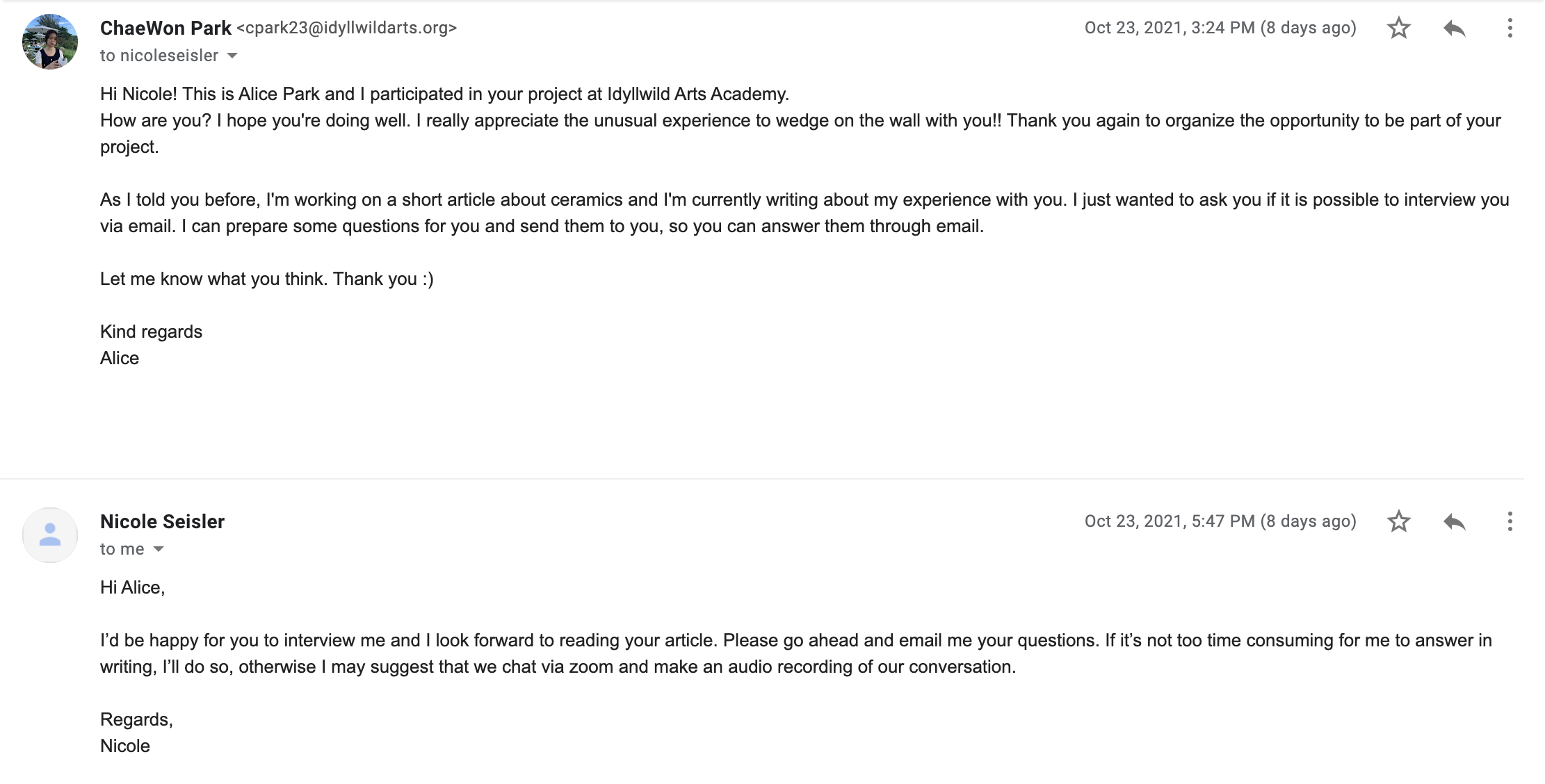
Nicole Seisler is a ceramic artist who also teaches ceramic students at Pasadena City College, CA. She received her MFA from the School of the Art Institute of Chicago and her BFA from the School of the Museum of Fine Arts, Boston.
She also had exhibitions of her works in many places, including Chicago, Illinois, and Seattle. Seisler has taught ceramics at the School of the Art Institute of Chicago and the University of Washington.
Currently, she works as the director of the Los Angeles contemporary ceramics gallery. Here is one of her works. This work of installation art made with ceramic clay is called Prepared together.
The artwork was created together with other people from many different communities. Each of them had their own chunk of clay, and applied it to the wall, and this was repeated 100 times.
Thus they could leave the mark of clay wedging—which represents the history of their motion to wedge—on the wall. Then, Seisler and the participants built a pile of clay wedges in the corner of the exhibition.



After the exhibition ended, the participants washed the marks of clay off with sponges. Then they covered the traces left behind with white paint. Thus, the wall looked like there had never been anything there at all.

Below is the email interview with Nicole Seisler:
1.What was the motivation to create this type of artwork?
This work did not develop from a particular starting point, rather it was part of larger processes in my studio practice and the meaning was derived from the process itself.
2.Can you explain the meaning of your work?
This is about equating an experience in clay with an experience in being human. Is it possible to be prepared? If there are many ways to perform the foundational act of preparation in clay, are there many ways to perform the act of preparation for us humans in our lives? Is it possible for us to be or to feel prepared (not underprepared or overprepared)?
3.What notion or message did you want to convey to iewers through this work?
The work does not have a message that it is trying to teach the viewer, instead it is conveying an experience and asking questions. I believe that the best art makes the viewer ask new questions instead of providing them with answers.
4.Why do you think leaving wedging marks—embedding history of participants—on the wall is important?
Wedging is the foundational language of clay. It is the principal action that imbues the material with functionality. Each artist develops their own nuanced signature in the wedged object. The wall is a recording device and a hurdle in the process, forcing me to relearn a strategy that I developed over twenty years ago.
How much wedging is actually necessary; at what point is the clay properly prepared--not over, under, or unprepared? How much preparation is truly possible--for the clay body and for our human bodies? The wall is a recording device and a hurdle in the process,forcing me to relearn a strategy that I developed over twenty years ago.
5.Then what does the pile of left-over wedged clays represent in your work?
The leftover pile is the residue of the residue of our actions. Ir represents that a foundational act is enough. Attempting to prepare is enough. We are enough.
6.Do you have any advice for growing young artists?
Art is about communicating, asking questions, and seeing the world differently. Therefore, I think one of the most important things for a young (or old! or any!) artist is to develop your own, individual voice. Don't follow trends for the sake of doing something popular.
Stay true to yourself, your interests, and your desires; if it is meaningful to you, it will likely be meaningful to others as well. A lot of young artists begin their journey believing that they are a painter and it takes most of them many years to discover that, in fact, they are much more than that, and art is much more than that.
Go outside of your comfort zone, try weird things, take risks. Be generous, build community, and approach artmaking with a spirit of abundance instead of scarcity or competition. Don't forget that we will continue to need each other throughout the difficult endeavor of being an artist.
7.Lastly, how do you feel when you see your work covered by the paints after the exhibition? Do you feel bitter? Or feel proud to leave another iron of clay on the other place? (Just like expanding your territory of clay)
I love that the work becomes painted over and embedded into the history of the site. It is invisible but very present. It is temporary but very permanent. There's power in that.

As you can see, Seisler has an inspiring vision for the field of ceramics. It was meaningful and an honor to be able to have a conversation with her about her artistic work.

Chaewon Park
Grade 11
Idyllwild Arts Academy

